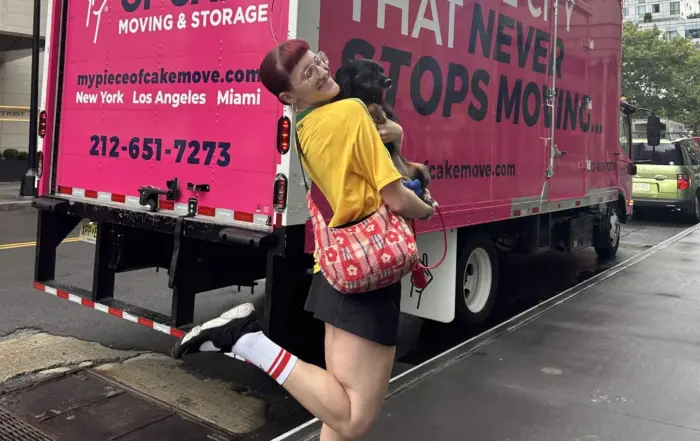How to pack shoes for moving
Packing your shoes for a move is often given little attention but our 5 simple hacks will help your footwear arrive damage free.
Shoes can often be an afterthought when packing your home, left until last and hustled into a gym bag or piled into a box. Your move might only last a few hours, but leather creases are forever.
While wrapping and protecting breakable items for your move is often the top priority, a few easy steps to prepare your footwear can help you land on your feet when settling back into work and other responsibilities.
You can take some simple steps to avoid marks, odors, moisture and other damage. None of it is complicated, we’ve stepped out some easy hacks that are worth the time and largely use ordinary household materials.
1. Sort and clean
Our top tip for any packing process is always to review your items and make sure you’re not paying to move something you no longer need. The same goes for your shoes, tempting though it might be to deal with it all at the other end. Take stock of your footwear, noting any pairs that are damaged or you avoid because they are uncomfortable.
Those pairs in good condition that you simply don’t want anymore can be donated to any Soles 4 Souls drop off point throughout Manhattan, Queens, Brooklyn, Staten Island, the Bronx or other major cities throughout the USA. To search drop off points visit https://soles4souls.org/give-shoes/.
Once you’re sure which pairs you’ll be taking with you, grab some everyday disposable kitchen gloves and fabric wipes (that won’t leave lint behind) and give them a cursory wipe down. New Yorkers are urban dwellers but they love to hike, so be sure to brush off any cake on mud and give time to dry and air. If you’re a suede lover, you’ll know to treat them separately and give them an extra spray of water proofing.
2. Prioritise
Now that your shoe inventory is clear, identify:
- Shoes out of season which can be boxed first. These include open toed sandals in winter, heavy boots in summer or special event shoes like embellished heels which you won’t need in a hurry. These may include irregular sized shoes like knee high boots and ice skates, that can do with additional attention to prevent damage.
- Shoes for moving day. Think season appropriate, comfortable for running around doing chores, with non-slippery soles for cleaning your apartment to hand in keys. If you’ve read our moving day checklist, these can be left with your moving day suitcase and all your essentials for the day.
- Shoes for post move that should be set aside for easy access as they’ll be needed in the days while you’re unpacking, these include leather lace ups for work, loafers for date night and light weight sneakers. This pile should include everyday shoes for other members of your household.

3. Address condition
Before you get to packing your shoes away, an essential step is to address their condition.
While you may not be moving into storage, if your shoes are likely to be left boxed for a few weeks you’ll want to mitigate moisture and odor.
Make sure they are properly aired and dried at least a few days before packing, if you have a pair of rain boots or cold weather shoes in high rotation during a winter move you may want to leave them aside until the night before your move.
Treating them with baking powder in the days before you pack them so you can shake out the powder before you wrap them up is also an option, but be mindful which shoes you use this on as it can dry out leather.
To address odor, one resourceful option is to cling wrap around your shoes for hygiene reasons and place them in the freezer overnight to kill germs. The simplest way is to add some tea bags to the front of the shoe before you stuff it with paper to help absorb the smell.
4. Essential prep
The one step you cannot skip when packing shoes is to give each one some support, mainly around the toe area. Even if it takes an hour, it’s worth the effort.
The cheapest way to do this is stuff a pair of socks into the front of the shoe. Don’t reach for the newspaper because this can leave stains. Packing paper and tissue paper is ideal, but if your budget doesn’t allow, paper towels are a handy alternative.
If you’re packing for a long distance or interstate move, you might want to invest in a pack of shoe trees which come in inexpensive plastic options as well as the traditional cedar style. The wood in these shoe trees also helps absorb any moisture
The final step is to wrap each shoe individually, ideally with packing paper. One common mistake people make when packing shoes is to place each one in a plastic bag. We’ve found these tear easily and can trap moisture which encourages mould growth.
When you’re wrapping them note any embellishments, buckles and heels as they should get additional attention. If you don’t have their original boxes this is a good time to use bubble wrap around your 6 inch heels. If you can find small and medium sized boxes for stuffing your winter boots with packing paper and preventing them from being folded and crushed up against your other shoes, it’s worth the effort. There are also boot shapers on the market, made of plastic, cedar and some pillow-style options.
Expensive, investment shoes should be left in their duster bags and boxes, with the toes stuffed with tissue paper and lids taped down so they don’t come open in transportation.
5. How to stack them
If you identified shoes to set aside for moving day and the first few days post move, remember to keep them aside with your moving day suitcase and not pack them with the rest of your things.
Before you place your shoes inside your moving boxes, make sure the boxes are clean, dry, damage free and double taped at the base. It’s worth lining the base of the box with packing paper before you start piling up the pairs.
Your heaviest shoes should be packed at the base of your moving box, with lighter items towards the top. If you have shoes in their individual boxes, the same principle applies, put the boxes at the base of the box and loose individual shoes on top. Shoe types such as heels can be placed on their side in alternate directions with layers of paper in between each row. Avoid combining clothes with shoes in this box.
If you have a large shoe collection you might want to group different types of shoes together, such as sneakers, pumps, and boots.
Add more packing paper at the top before you seal the box with tape and label it clearly. The more detailed your labelling during packing the easier it’s going to be to manage those first few days settling it at your new home and keep that spring in your well heeled step.
Ready to make a move? Get in touch today for an obligation-free guaranteed flat price moving quote.
Related articles

Average Moving Cost in Connecticut: Factors that Affect Moving Prices
Learn More

9 Tips for Moving to a Building with no Elevator
Learn More

How to Get Rid of a Couch in 8 Easy Ways
Learn More

Average Moving Costs in NJ: Factors that Affect Moving Prices
Learn More
















